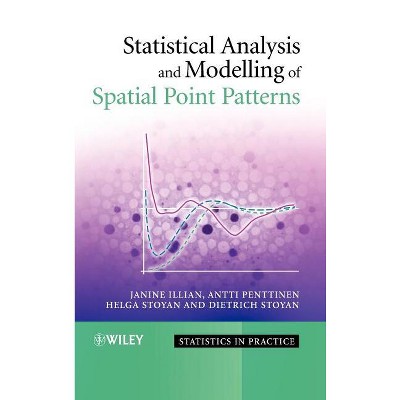Spatial Database Systems - (Geojournal Library) by Albert K W Yeung & G Brent Hall (Hardcover)

About this item
Highlights
- The decision to write this book was motivated by a number of factors.
- Author(s): Albert K W Yeung & G Brent Hall
- 553 Pages
- Science, Earth Sciences
- Series Name: Geojournal Library
Description
Book Synopsis
The decision to write this book was motivated by a number of factors. First, although several useful textbooks on spatial databases have recently been published, this is an area of spatial information science that has lagged somewhat behind the rapid advances of the technology and the profusion of books on domain-specific applications. Second, much of the information pertaining to spatial database technologies is only available in scattered journal papers and conference proceedings, and prior to this book no single effort has been made to sift through this expansive literature and unite the key contributions in a single volume. The tasks of sourcing and coherently integrating relevant contributions is daunting for students, many of whom have a substantial number of competing demands placed on them. This book should make the task of knowledge building less daunting. Third, and perhaps most importantly, an apparent trend in many spatial information science programs is to focus, from first or second year undergraduate through to fourth year courses, on learning to work confidently and independently with increasingly complex software tools. Hence, many courses are technical in nature, and while they continue to produce technically adept students, knowledge of the broader aspects of spatial databases is often not as complete as it might be among graduates. Some programs have sought to address this by introducing courses that focus on spatial data management. However, these courses are largely unsupported by a relevant and contemporary textbook.From the Back Cover
This first of a kind book places spatial data within the broader domain of information technology (IT) while providing a comprehensive and coherent explanation of the guiding principles, methods, implementation and operational management of spatial databases within the workplace. The text explains the key concepts, issues and processes of spatial data implementation and provides a holistic management perspective that complements the technical aspects of spatial data stressed in other textbooks. In this respect, this book is unique in its coverage of spatial database principles and architecture, database modelling including UML, database and spatial data standards, spatial data infrastructure, database implementation, and workplace-oriented project management including user needs study and end user education. The text first overviews the current state of spatial information technology and it concludes with a speculative account of likely future developments. Cutting edge research andpractical workplace needs are defined and explained. Topics covered, among others, include strategies for end user education, current spatial data standards and their importance, legal issues and liabilities in the ownership and use of spatial data, spatial metadata use within distributed databases, the Internet and Web-based solutions to database deployment, quality assurance and quality control in database implementation and use, spatial decision support, and spatial data mining.
The book applies equally to senior undergraduate and graduate courses and students, as well as spatial data managers and practitioners already in the workplace. It will enhance their technical and human-resource based understanding of spatial data management. Certification courses that seek to prepare students for careers in the spatial information industry and courses targeted at enhancing needed geospatial workplace knowledge and skills will benefit greatly from its content.
Review Quotes
From the reviews:
"This book deals with the domain, design, implementation, and project management of spatial database systems. ... I found this book very interesting and useful. I believe that it could really help enhance readers' understanding of spatial data management. It is intended for students of spatial information science, as well as professionals in the workplace. ... this book could be useful to practitioners in various professions that use spatial information technology." (Georgia Garani, ACM Computing Reviews, January, 2009)







